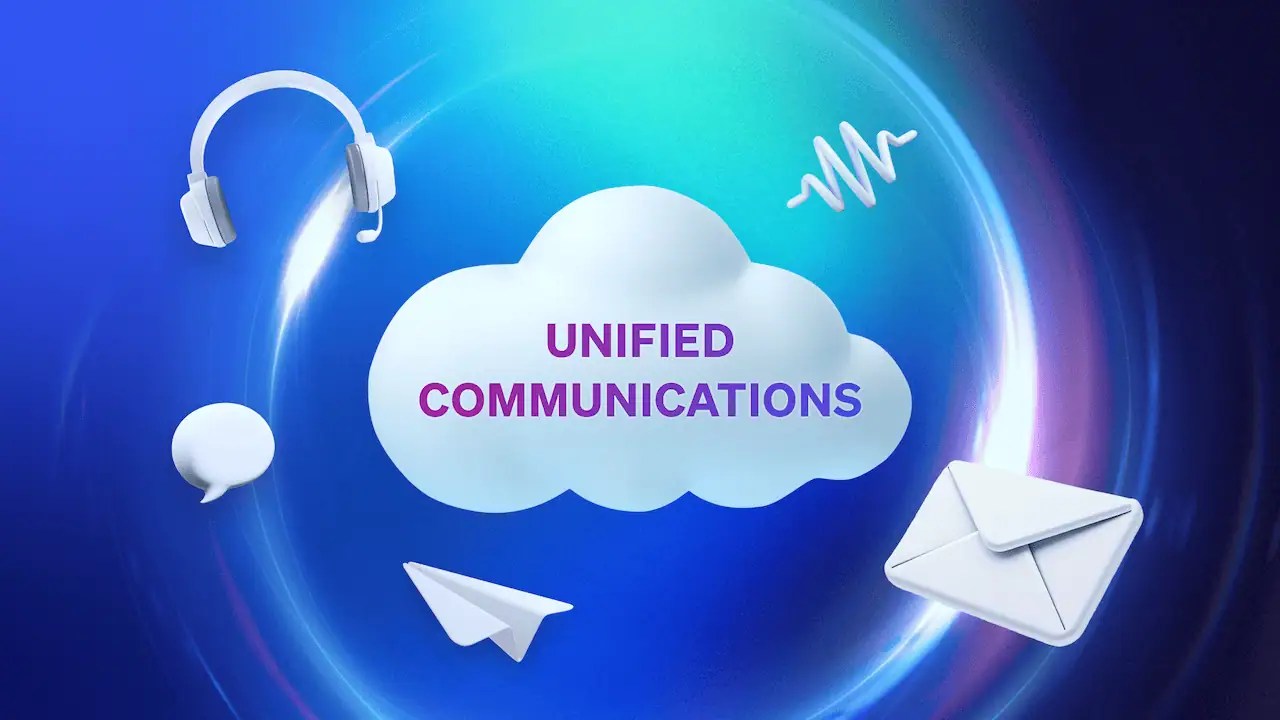We’re in the modern era of business communications, where traditional phone systems no longer cut it. Even if businesses think they’re just fine, this has more to do with a lack of awareness than their current solution genuinely satisfying their needs.
Thanks to hybrid work, rising customer expectations, and app overload, it’s become vital to unify communication tools. Here, we’re talking about incorporating phone, video, chat, and sometimes even email into a single, cloud-based platform — hosted unified communications (UC).
What Is Hosted Unified Communications?
Hosted UC, often referred to as unified communications as a service (UCaaS), integrates communication tools — voice calling, video conferencing, voicemail, instant messaging, file sharing, and more — into one centralized, cloud-based platform managed by a third-party provider.
You get a single app that’s consistent throughout your business along with the ability to bolt on handsets and integrate other business apps.
Unlike on-premises PBX systems that require local hardware and manual maintenance, hosted unified communications solutions are fully managed off-site, providing scalability, regular updates, and 24/7 accessibility.

Key communication tools included:
- VoIP telephony: Take advantage of internal and external PSTN calling.
- Unified messaging (voicemail, email, SMS, and fax): Bring all messaging formats into a single pane of glass.
- Instant messaging and presence: View who’s online, and send messages rather than interrupting with a call.
- Video and web conferencing: Schedule or host ad-hoc online meetings.
- File sharing and team collaboration: Collaborate on documents, and chat in channels and group discussions.
- Call routing and interactive voice response (IVR): Program how inbound calls reach their required destinations.
- CRM and business tool integrations: Create a two-way data sync for personalization and efficiency.
Key Advantages of Hosted UC Versus On-Premises
1. Lower costs (no hardware or maintenance)
Hosted unified communications eliminates the need for physical PBX systems, on-site servers, and costly technician visits. With this, you remove the associated costs of maintaining such a system. Likewise, there are no up-front costs for hosting this equipment in your offices.
Instead, you subscribe to a cloud instance of your provider’s environment. They do the hosting (hence the name “hosted”).
A subscription-based model means you pay only for what you need — and your provider handles all backend maintenance and updates. It’s a bit like Netflix — the streaming service has all the movies and shows, and you pay a monthly fee to access them.
2. True scalability
As there’s no physical setup (unless you still need handsets), you can add new users, devices, or locations in minutes — not weeks. It’s not like the old days when you had to worry about capacity in your server room or get new phone lines installed.
Whether you’re scaling for seasonal staff or expanding to multiple offices, hosted UC platforms grow with your business, instantly. You just turn on a new license, configure the details, and provide your new end user(s) with log-on credentials.
3. Enhanced mobility and remote access
Hosted UC is built for the modern workforce, enabling communications anywhere that there’s an internet connection. Users could be homeworkers, coffee shop dwellers, in-car callers, and even those frontline workers who need rugged devices.
Employees can make calls, join meetings, and access voicemails or chat from their mobile device, laptop, or browser — anywhere and anytime — as long as they’re supported by some form of connectivity.

4. Business continuity and disaster recovery
With on-premises systems, you’d be reliant on your own IT environment (power, air con, etc.) to make sure the phone system worked optimally. If something went wrong, you’d have to manually invoke a change or wait for your phone line provider to place an order and action this.
With hosted UC, you get built-in redundancy and automatic failover. Hosted UC providers offer industry-leading uptime (often 99.999%) and geo-redundant data centers that protect your communication systems in the event of a power outage or natural disaster.
5. Seamless integration
As the vast majority of businesses are cloud-first and the proliferation of business apps continues, it’s vital to gain back efficiencies between systems.
Thanks to CRM integration and open APIs, you can connect your UC platform with CRM tools like Salesforce and HubSpot or unified customer experience platforms, project management apps, and email systems to streamline workflows and boost productivity.
6. Future-ready features
Unless you’ve been living under a rock recently, there’s no getting away from artificial intelligence (AI). Whether you’re a skeptic or pro-AI, there are genuine use cases in businesses that are relatively low touch and drive a quick return on investment.
AI-powered call routing, live transcription, speech analytics, and real-time agent assist capabilities are now standard with many hosted UC platforms, helping businesses work smarter.
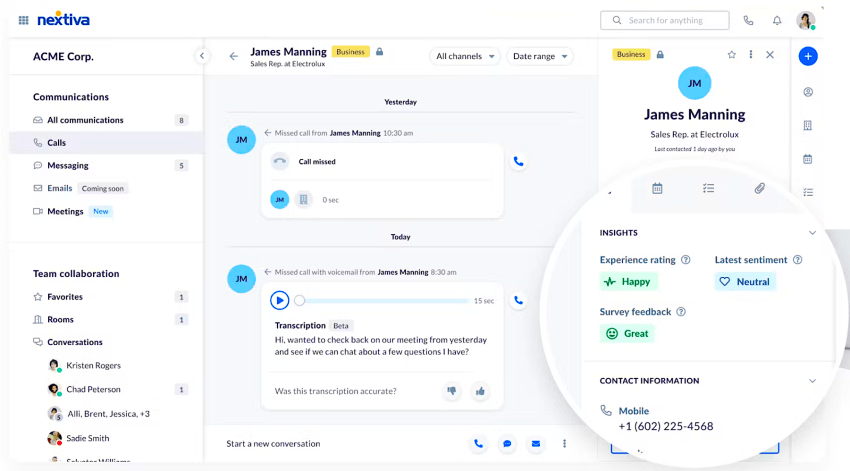
Must-Have Features in Your Hosted UC Platform
1. VoIP calling
Many hosted UC platforms started their life as calling platforms. The ability to make and receive high-quality calls over the internet from any location is the backbone of most service providers.
Making calls from a handset, headset, or mobile app is standard. Guaranteeing high quality, ensuring no drops in service, and having analytics on hand for troubleshooting go hand in hand with VoIP calling.

2. Video conferencing
For longer calls or more in-depth meetings that need face-to-face interaction, video conferencing was once the low-cost alternative to traveling from site to site.
Today, thanks to internet improvements and ever-increasing functionality, video conferencing is the first choice for a face-to-face meeting. As well as basic video calling, you get features like screen sharing, call recording, transcription, translation, and many other components to help host a productive meeting.
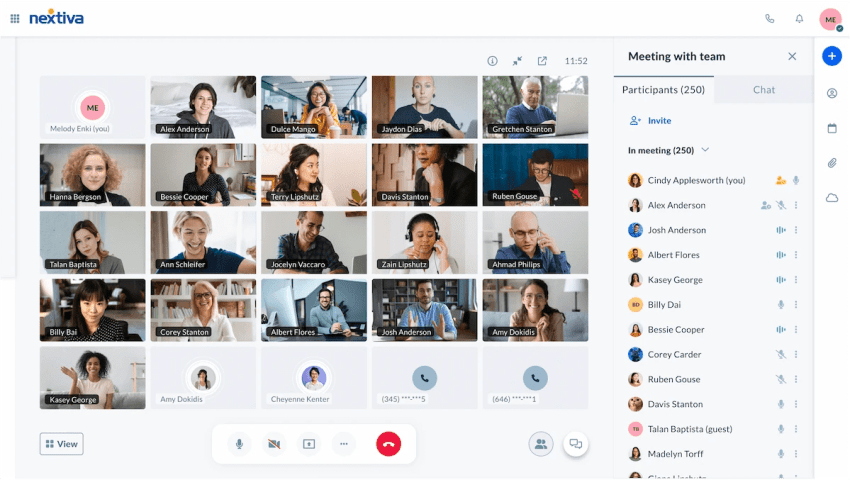
3. Unified messaging
If you’re getting messages via different communication channels, how much easier would it be to manage them in a single interface?
Whether it’s voicemail, SMS, unified email, or even fax, you can combine these messages into one streamlined inbox to eliminate app-jumping and improve message visibility.
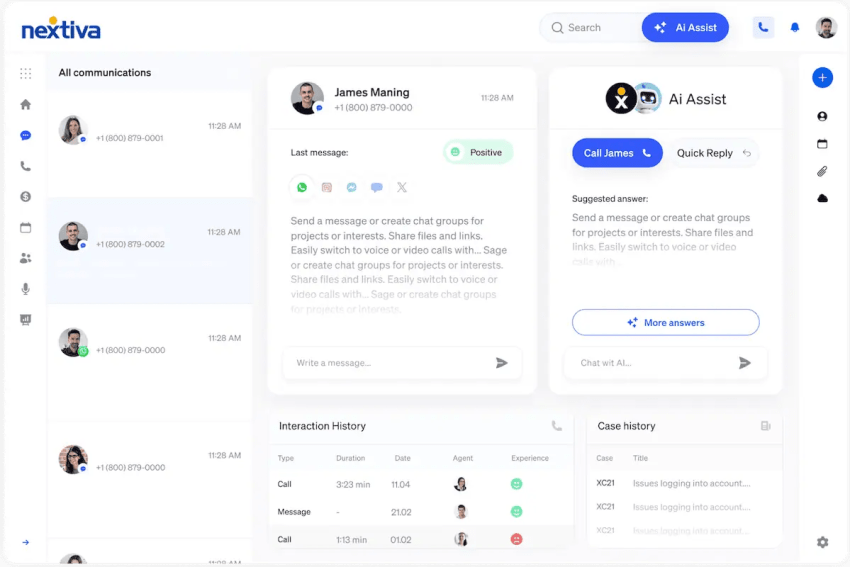
4. Call routing and IVR
When it comes to receiving calls from customers, you need your UC solution to be working as efficiently as possible so you can provide the best customer experience.
With most hosted UC systems, you can automatically route calls to the right department or individual based on caller input or predefined rules — vital for improving customer satisfaction and reducing wait times.

5. Presence and instant messaging
Not everything needs to be a meeting. But it doesn’t need to be an email either.
If you need quick help that doesn’t require a formal email, you can see who’s online, busy, or away, and message them directly in real time. This keeps teams connected and reduces email overload.
You also get features like file uploads, emojis and GIFs as well as the ability to turn your message into a meeting or call.

6. Mobile and desktop app support
Access your UC platform from any device, whether it’s a laptop in the office or a mobile phone on the go. You get the same experience and access to features like call hold, transfer, and instant messaging regardless of whether you’re sitting at your desk or between customer visits.
You can even switch a call on a handset to your mobile app mid-call if you need to leave the office.
7. AI-powered tools
From call transcription and real-time summaries to sentiment analysis and intelligent call routing, AI boosts productivity and enhances insights.
While the major benefit of AI tools (so far) in hosted UC lies in customer experience, there’s also a ton of productivity gains to be made in internal use. At the end of meetings, for example, you can get an instant summary and a log of actions to be taken by participants.
You can also benefit from text-to-speech technology, automatic updating of knowledge bases, and advanced analytics to inform workforce management.
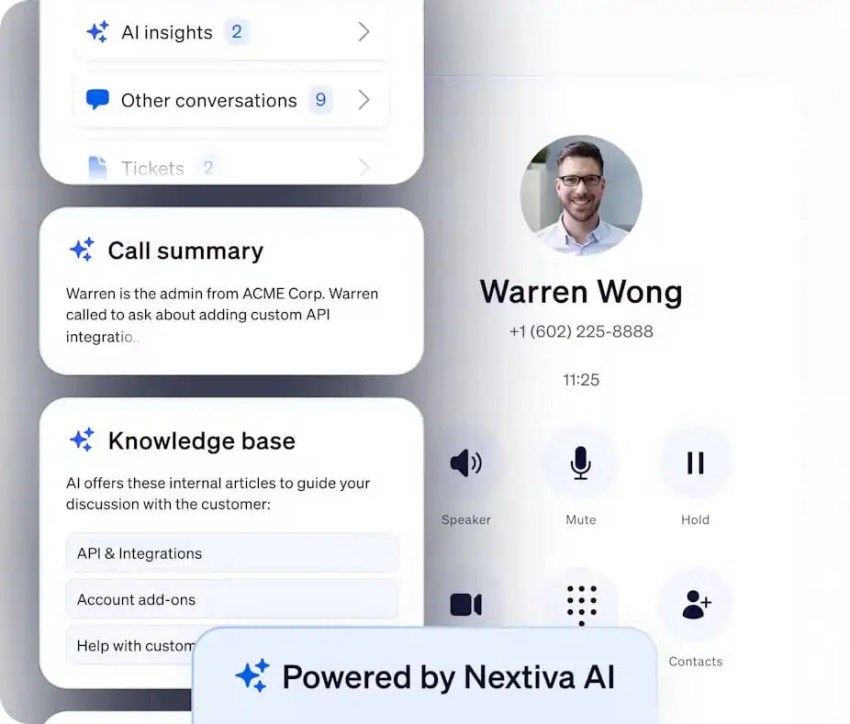
8. CRM integration
Sync your communications platform with apps like Salesforce, HubSpot, or Microsoft Dynamics for a 360-degree view of customer interactions and improved personalization.
When connected, you can use features like screen pop and click-to-dial for better call management. The sharing of data between platforms reduces duplicate information entry and helps leverage customer insights from previous interactions and purchases.
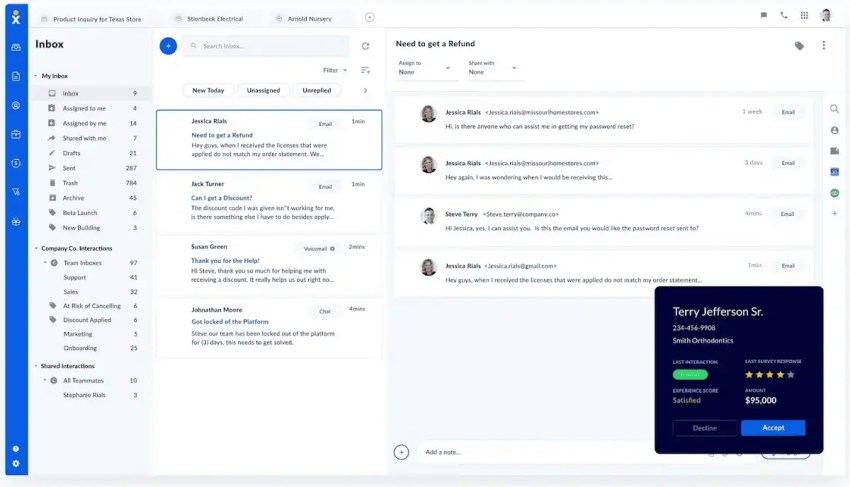
9. Enterprise-grade security
Security isn’t so much a feature anymore — it’s a requirement. Ensure your provider offers end-to-end encryption, secure access controls, and compliance with industry standards like GDPR, HIPAA, and SOC 2.
To cater for all sizes of customer, the higher-end hosted UC providers will invest in security credentials and ongoing processes to ensure compliance.
Hosted UC vs. On-Premise PBX: What’s the Difference?
| Factor | Hosted UC | On-Premises PBX |
|---|---|---|
| Set-up Cost | Low | High |
| Scalability | Instant, flexible | Hardware dependent |
| Maintenance | Managed by provider | Requires in-house IT |
| Mobility | Native remote support | Limited |
| Uptime | 99.999% or higher | Varies |
| Updates | Automatic | Manual or contracted |
| Disaster Recovery | Included | Requires backup systems |
| Support | 24/7 from provider | Internal only |
Top 5 Hosted UC Providers (2025)
The following unified communications companies are considered leaders in the market by customer numbers, market analysts, and peer reviews.
1. Nextiva (best all-in-one UCaaS platform)

Nextiva delivers a robust, user-friendly hosted UC solution with unmatched reliability, advanced AI features, and intuitive integrations for businesses from small enterprises to large organizations.
Why Nextiva stands out:
- Unified platform combining VoIP, video, SMS, and collaboration
- 99.999% uptime and military-grade security
- Native CRM plus integrations with Salesforce, Microsoft, and more
- Real-time analytics, call recording, and AI-powered automation
- 24/7 U.S.-based customer support
There’s also a plethora of advanced features available thanks to AI integration:
- Advanced IVR (conversational AI)
- Intelligent skills-based routing
- Smart outbound dialing
- Real-time meeting summaries
- Sentiment analysis and keyword detection
- Call volume prediction
- Voicemail transcription
Ideal for: Businesses that want a reliable, all-in-one communication suite with excellent support and future-ready capabilities.

“I was blown away by what Nextiva offered compared to other companies. I love the ability to see who I’m talking to and manipulate the call within the CRM in one click. Nextiva really helps with the ability to be remote. It provides us the ability to be flexible with our teams, and it doesn’t put a break in our business in any way.”
~ Taralynn Reburn
2. RingCentral
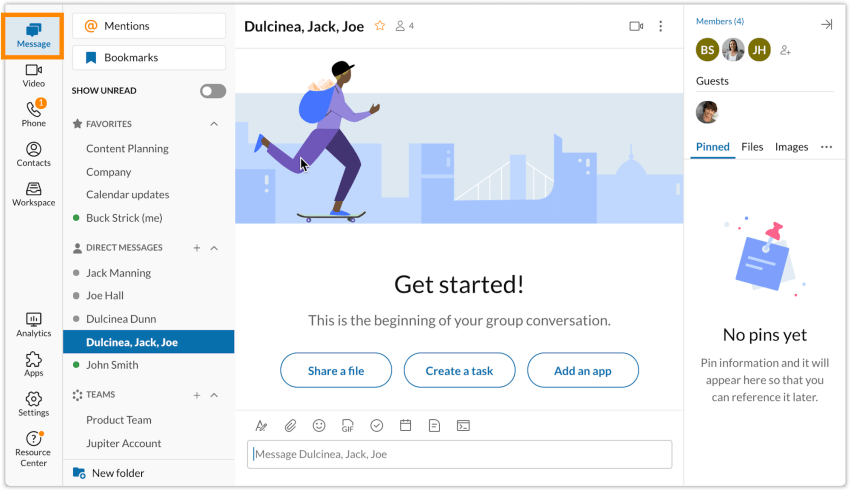
A long-time UCaaS player with powerful video conferencing and integrations, RingCentral MVP includes VoIP, messaging, and video in one app.
You get all the standard features you’ve come to expect in a hosted UC solution, such as a contact directory, chat-based channels, and analytics on company interactions.
One recent addition includes the AI-receptionist. While not demoed perfectly at events like Enterprise Connect, the use case will surely save busy receptionists time once free from bugs.
Ideal for: Midsize to large companies looking for extensive integrations and analytics.
3. Zoom Phone
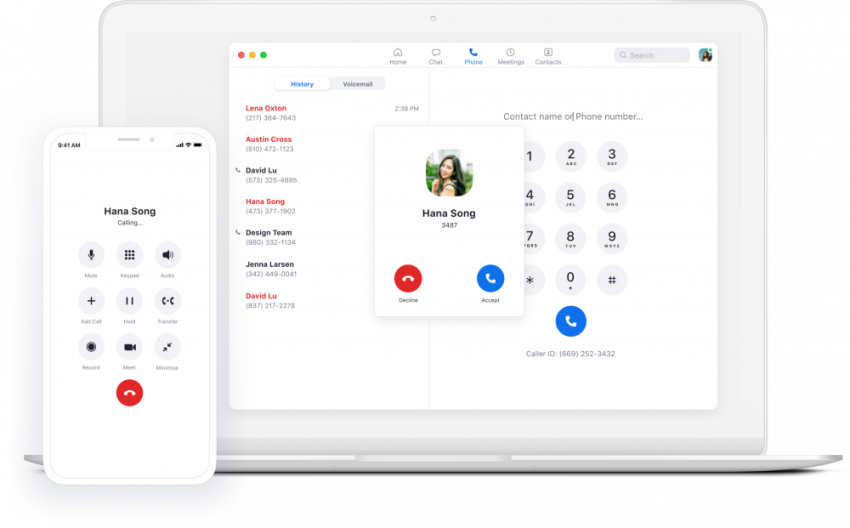
Zoom’s phone platform extends its well-known video conferencing brand into voice and UCaaS territory with mobile flexibility.
Building on its existing customer base and aiming to expand its horizons, Zoom Phone offers the basics like voicemail, chat, and contacts in a single app while delivering AI features through its AI Companion:
- Meeting summary
- Smart recording
- Voicemail tasks
- Chat sentence completion
Ideal for: Businesses already using Zoom and seeking seamless UC expansion.
4. 8×8
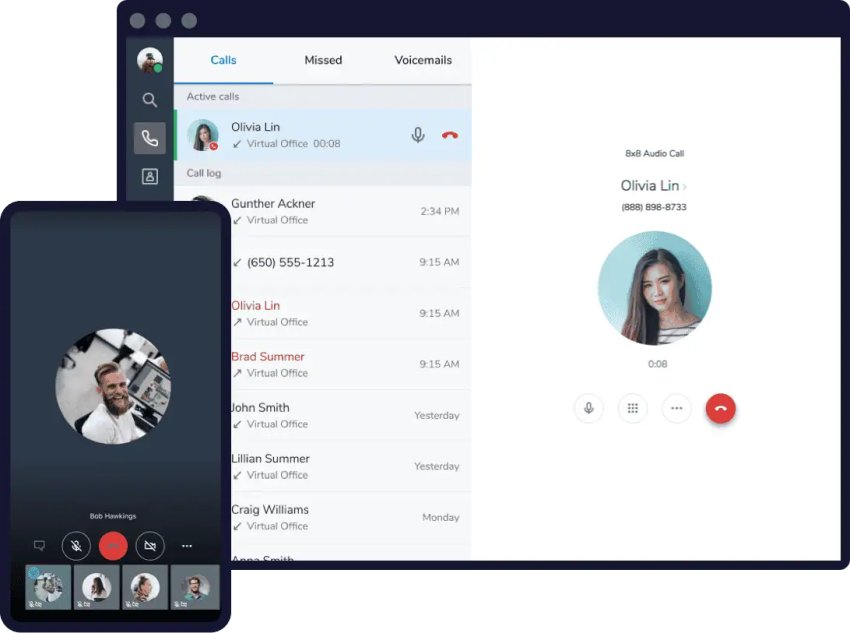
8×8 offers voice, video, chat, and contact center capabilities with a global footprint. You get access to standard features like call history, speed dials, and a contact directory.
You can also host meetings, switch to the mobile app, and converse with contact center agents without changing apps, thanks to its single platform approach for both technologies.
Ideal for: Global companies or organizations requiring international number coverage.
Read more: Need a top-rated 8×8 alternative?
5. Cisco Webex Calling
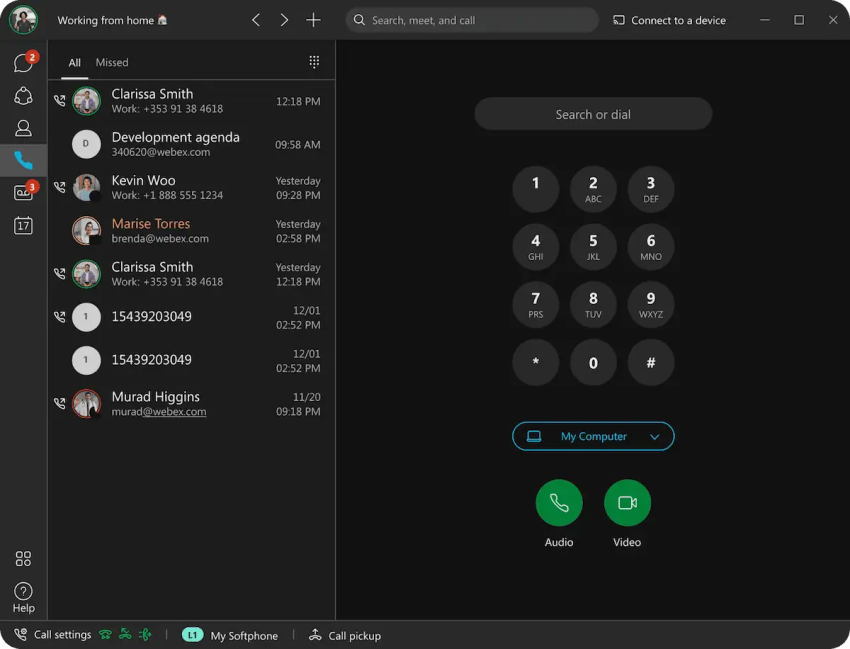
Webex is an enterprise-grade solution with strong security, excellent compliance, and hybrid options for businesses transitioning from Cisco on-prem systems. For businesses with strict requirements when it comes to things like conditional access and business monitoring, Cisco relies on its wider technology stack to check those boxes.
In the UC app, you get asynchronous chat, connection to a meeting room device, and unified messaging. Wider contact center features also include advanced functionality like agent resets and cross-department workforce management.
Ideal for: Enterprises that prioritize advanced call controls and Cisco-native environments.
Choose the Right Hosted Unified Communications Provider: Nextiva
When evaluating hosted unified communications platforms, focus on:
- Ease of onboarding
- Support and service levels
- Mobile and remote work capabilities
- Security standards (HIPAA, GDPR, etc.)
- Breadth of features (voice, video, messaging, chat, contact center, AI, smart voicemail)
- Integration options with existing apps and CRM
- Scalability and reliability guarantees
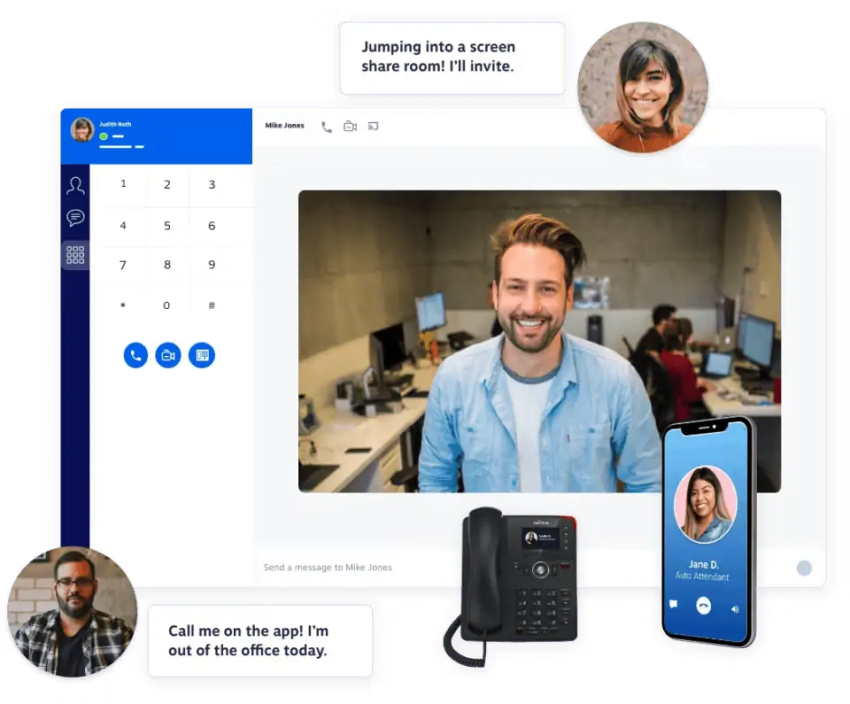
Nextiva offers an ideal balance of performance, affordability, and scalability — especially for companies ready to centralize their collaboration tools in one cloud-powered solution.
With Nextiva serving a variety of customers like San Antonio Spurs, Canyon Coolers, and Orange County Rescue Mission, you can bet you’ll be in safe hands.
Are you ready for UCs? Take our free Unified Communications Readiness Quiz and find out.
Are you ready for Unified Communications?
UC is the integration of business communication and collaboration apps in a single, unified platform.
Take our free Unified Communications Readiness quiz and find out.

















 Productivity
Productivity 

